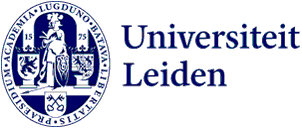
Virtual reality in hospitals: from patient communication to operating theatre crises
Elise Sarton doesn’t beat about the bush, ‘Did you know that anaesthesiology is the third largest medical speciality? Probably not; very few people do. But after the psychiatrists and internists, it’s the anaesthesiologists.’ She is using her inaugural lecture to give her field a chance to take the limelight for a change.

Sarton is the second female professor of general anaesthesiology in the Netherlands. The first, Brit Doreen Vermeulen-Cranch, was the founder of the field in the Netherlands. ‘Until then, surgeons fiddled around with ether on wipes and the like.’ Vermeulen-Cranch was appointed professor at the University of Amsterdam in 1958. This put anaesthesiology on the map as an independent medical speciality.
Did Sarton always want to be an anaesthesiologist? Not really. She actually wanted to go into journalism, to make documentaries. But fate decided otherwise. To please her parents, she enrolled on a medical degree. She had a low average on her school diploma and stood little chance of getting a place on the course so she dared to take the gamble. But to her great surprise, she was chosen from the ‘draw with the worst marks’. She laughs, ‘That was against all the odds so I decided to seize the opportunity.’
Over 35 years later, as head of the department of anaesthesiology and division chair, she holds sway over a large part of the LUMC. ‘The capabilities that anaesthesiology requires make us good in other areas too. We are good at communicating and organising despite not being the treating doctor. We are trained to support in different situations and throughout the entire hospital. Management roles are also an extension of this. So too is chairing a disaster team, for example, because anaesthesiologists also play an important role in acute medicine. Our profession is about patient safety. In life-threatening situations, we optimise the vital functions so the patient can be saved.’
‘What also appeals to me is that it is a young profession. We are still in the process of discovering the right resources.’
Discovery
Anaesthesiology might seem like a job that you do alone but the opposite is true, Sarton emphasises. It is one of the few specialities that joins other disciplines and is found throughout the hospital. ‘And when it comes to pain management, for example, we are also the treating doctor. So patient contact is an important part of this speciality. What also appeals to me is that it is still a young profession. We’re still in the process of discovering the right resources. Innovation is fun not just technically speaking but pharmacologically too.’
As Professor of General Anaesthesiology, training is close to her heart. ‘We try to select the right people for the profession and to train them to be good specialists. Various characteristics are really important to being good at the job. The first is communication. As we work throughout the hospital, we have to be able to communicate with everyone, at all ages and levels. The second is organisational skills. The operating theatre complex has 20 operating theatres. When sudden changes happen, everything has to be reorganised immediately. We rarely delay everything by half an hour. Instead, we delay some operations and bring others forward. Then teams are shifted or changed.’
And, she adds, an anaesthesiologist really has to love technology. ‘It’s a really technical job. We like computers and we also like cooking with medicine. That’s what I always compare the job with. Some people have low blood pressure and need it increased a bit whereas others need it decreased. And that all has to be done at a rapid pace.’
'‘I’m going to give you a jab’, evokes a stronger reaction than ‘I’m going to numb your back’.
Coaching and training
To train students in these skills so they become medical specialists, Sarton has developed a number of research programmes. One is a personal development coaching programme. ‘To be a good medical specialist, you have to know yourself. It is useful to know why you are as you are. Then you know how to use that in your work, and that makes you tolerant and resilient.’
Another research programme is about patient communication. ‘How we reassure them. A junior doctor from France had had very specific training in that and felt ours could be improved. “I’m going to give you a jab”, evokes a stronger reaction than “I’m going to numb your back” or “I’m going to give you an IV.” That is also important for the operation because the calmer the patient the better.’
Virtual reality
To train students properly, they decided to use virtual reality so the students could experience the situation for themselves. ‘If you are wheeled into a cold operating theatre, you feel what it means to have someone hold your hand. This helps the students retain what they learn. It really works. And it’s now the PhD research of that junior doctor I mentioned earlier.’
Virtual reality is also used to train operating theatre teams. ‘We are building something where we can simulate all aspects of an operation. So we can train junior doctors in all crisis situations. It has to be as realistic as possible and there has to be a real possibility of stress. We are testing and improving it now. The avatars have been given facial expressions for non-verbal communication and a glove has been added for the surgeon so that he really feels things. The good thing about this VR environment is that all the elements can also be practised separately. So the anaesthesiologist or surgeon can also practise just their own actions. But the real innovation is in being able to use it to train a whole team. That is very valuable because you really are in it together.’
Text: Marijn Kramp
Banner: Unsplash
